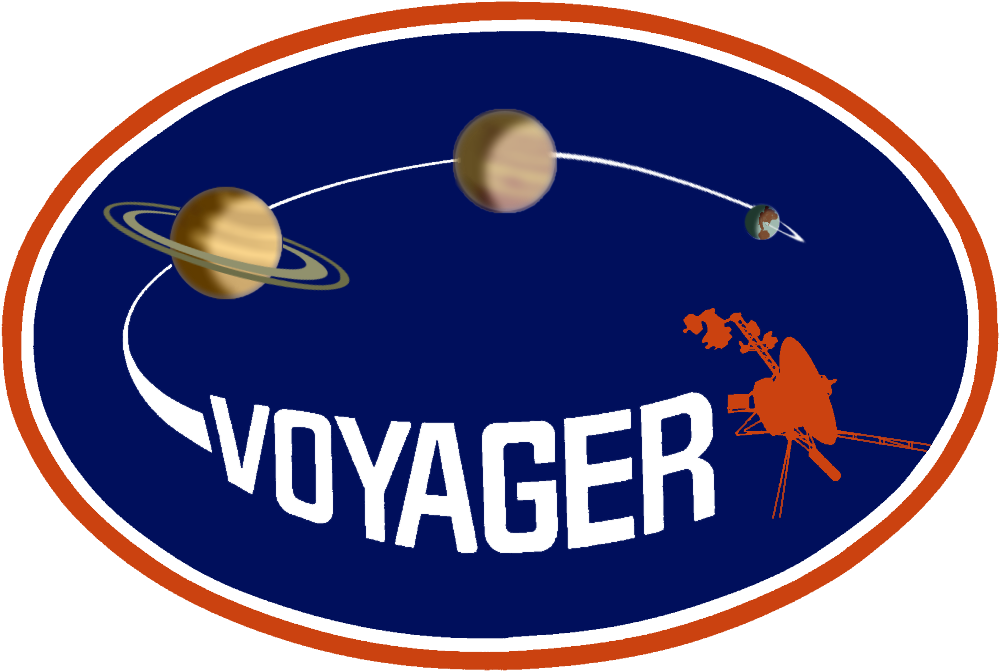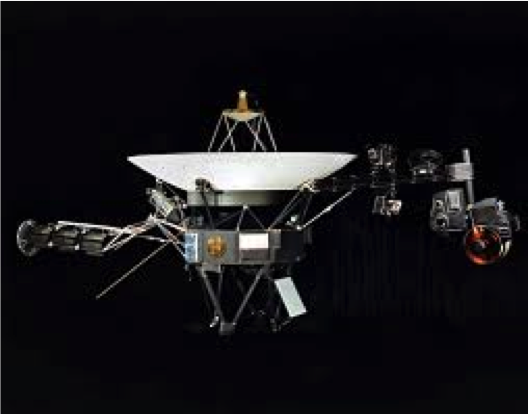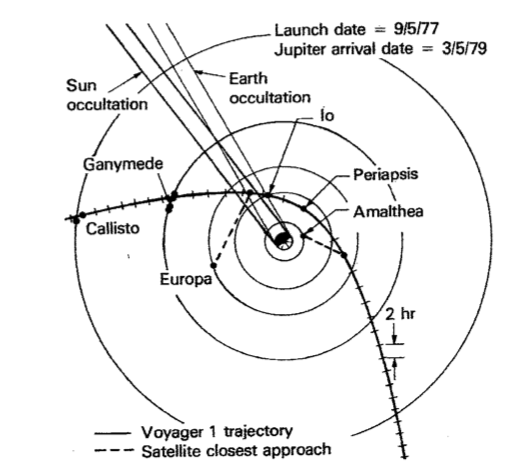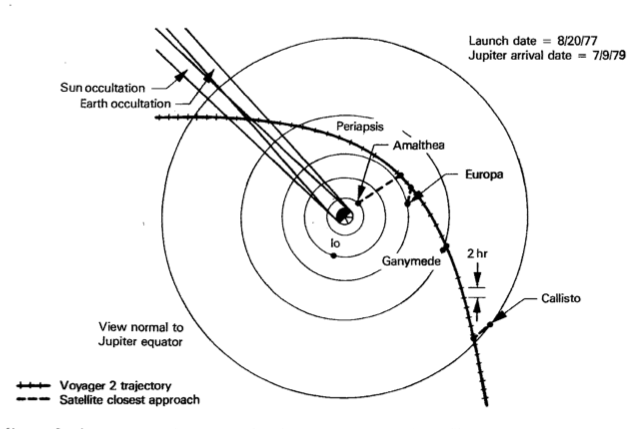- investigate the circulation, dynamics, structure, and composition of the planet's atmosphere;
- characterize the morphology, geology, and physical state of the satellites of the planet;
- provide improved values for the mass, size, and shape of the planet, its satellites, and any rings;
- determine the magnetic field structure and characterize the composition and distribution of energetic trapped particles and plasma therein.

The 3-axis spin stabilized Voyager spacecraft were equipped with an enabling scan platform, a challenging limited computer and eight-track digital tape recorder. The mission was designed to take advantage of a planetary alignment that occurs every 175 years. Although Voyager’s goal was to explore Jupiter and Saturn and their environments, different options were reserved for the 2 crafts. Voyager 1 was targeted to Jupiter, Saturn and Titan while the Voyager 2 trajectory allowed it to continue on to Uranus and Neptune.
Geometry in "SPICE" format may be obtained at the NAIF node
Jovian Objectives or Goals
Jupiter Encounter Events
Voyager 1 - 1979
4 Jan. approach phase began
6 Jan. 4-color images of Jupiter every 2 hours began
30 Jan. – 3 Feb 10 rotation jovian movie
5 Mar. closest approach to Jupiter at 349,000 km
6 Jan. 4-color images of Jupiter every 2 hours began
30 Jan. – 3 Feb 10 rotation jovian movie
5 Mar. closest approach to Jupiter at 349,000 km
Amalthea 417,000 km
Io 21,000 km
Europa 734,000 km
Ganymede 113,000 km
Callisto 126,000 km
Io 21,000 km
Europa 734,000 km
Ganymede 113,000 km
Callisto 126,000 km
Voyager 2 - 1979
24 Apr. observations began
27-29 May 5 rotation movie
9 Jul closest approach to Jupiter at 570,000 km
27-29 May 5 rotation movie
9 Jul closest approach to Jupiter at 570,000 km
Amalthea 558,000 km
Io 1,130,000 km
Europa 206,000 km
Ganymede 62,000 km
Callisto 215,000 km
Io 1,130,000 km
Europa 206,000 km
Ganymede 62,000 km
Callisto 215,000 km
References Helpful in Scoping the Mission
Mission Description
Spacecraft description
A list of pertinent references
Also See Space Science Reviews 21 (1977 – Issue 2) 77-101.
Also See Space Science Reviews 21 (1977 – Issue 2) 77-101.
Understanding the Instruments and Archived Data
ISS - Narrow and wide angle cameras with filters in a 280-640 nm range
IRIS - Infrared Interferometric Spectrometer
UVS - Ultraviolet Spectrometer
PPS - Photopolarimeter
MAG - Triaxial Fluxgate Magnetometer
LECP - Low Energy Charged Particle Detector
PLS - Plasma Spectrometer
PRA - Planetary Radio Astronomy Investigation
PWS – Planetary Wave Spectrometer
CRS - Cosmic Ray System
RSS - Radio Science System
IRIS - Infrared Interferometric Spectrometer
UVS - Ultraviolet Spectrometer
PPS - Photopolarimeter
MAG - Triaxial Fluxgate Magnetometer
LECP - Low Energy Charged Particle Detector
PLS - Plasma Spectrometer
PRA - Planetary Radio Astronomy Investigation
PWS – Planetary Wave Spectrometer
CRS - Cosmic Ray System
RSS - Radio Science System
Other Useful Products for Interpreting the Data
Locating Voyager Publications
Geometry in "SPICE" format may be obtained at the NAIF node
 PDS: The Planetary Atmospheres Node
PDS: The Planetary Atmospheres Node




